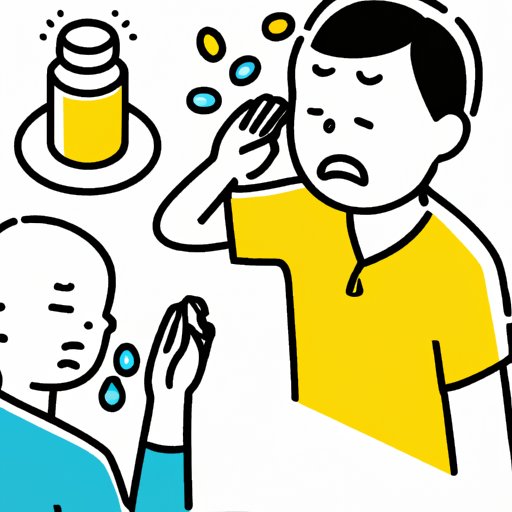
Introduction
Dehydration is a state that occurs when your body loses more fluids than it takes in. It can happen when you don’t drink enough water or lose fluid through sweat, diarrhea, or vomiting. Severe dehydration can lead to serious health issues if left untreated. In this article, we will explore ways to detect and prevent dehydration to maintain a healthy lifestyle.
Symptoms to Look Out For
The symptoms of dehydration can vary depending on the severity of the condition and the age of the individual. Initial symptoms of mild dehydration include fatigue, thirst, dry mouth, and headache. As dehydration worsens, you may experience dizziness, dark urine, rapid heartbeat, sunken eyes, dry skin, and confusion.
Recognizing the early symptoms of dehydration is essential for prompt treatment. Remain aware of the above-mentioned symptoms and take actions to prevent further dehydration.
How Much Water Do You Need?
The amount of water an individual requires daily depends on their age, gender, weight, and physical activity level. In general, it is recommended that adults drink around 8 glasses or 2 liters of water each day to prevent dehydration. However, this can be adjusted based on individual needs.
For more precise guidelines, the National Academies of Sciences, Engineering, and Medicine recommends adult men consume 125 ounces (3.7 liters) of water per day, while adult women consume 90 ounces (2.7 liters) of water per day. Pregnant or breastfeeding women may require additional water.
There are various ways to track your water intake, such as using an app, keeping a water bottle with you throughout the day, or recording the number of glasses of water consumed in a journal.
Foods That Help Hydrate
While water is the best source of hydration, certain foods can also assist in providing an adequate amount of fluids. High-water content fruits and vegetables such as watermelon, cucumbers, oranges, grapefruit, and strawberries can help maintain hydration levels. Milk and herbal tea can also assist in hydration.
Including these types of food in your diet can assist in providing the necessary fluids needed daily.
How to Check for Dehydration
Simple tests can be performed to check hydration levels. One easy method is to pinch the skin on the back of your hand. If the skin takes a few seconds to return to its normal position, you may be dehydrated. Another way is to monitor the color of urine. Dark yellow urine is a sign of dehydration, while light color urine is a sign of proper hydrating.
It is crucial to monitor hydration levels regularly and address any changes promptly.
Avoiding Dehydration During Exercise
Fluid loss is common during exercise due to sweat, increasing the risk of dehydration. To avoid dehydration during exercise:
- Drink plenty of water before exercise.
- Drink 7-10 ounces of water every 10-20 minutes during exercise.
- Replenish fluids post-workout with water or beverages that contain electrolytes like sports drinks and coconut water.
By prioritizing hydration in your exercise routine, you can substantially minimize the risk of dehydration.
How to Treat Dehydration
When you observe even mild symptoms of dehydration, address them immediately. Drink water or other fluids like fruit juices, sports drinks and coconut water to maintain proper hydration levels. Take rest and avoid exertion in the period of dehydration.
If severe dehydration is suspected, seek medical attention immediately, as you may need to receive intravenous fluids in a hospital setting.
Conclusion
Dehydration can cause various negative impacts on the body, including headache, fatigue, and dizziness, but it is entirely preventable with appropriate attention and care. By drinking enough water, eating foods with high-water content, exercising with suitable precautions, and keeping a track of your body symptoms, you can avoid dehydration and associated ailments. Plan and prioritize your hydration to maintain a healthy and active lifestyle.




